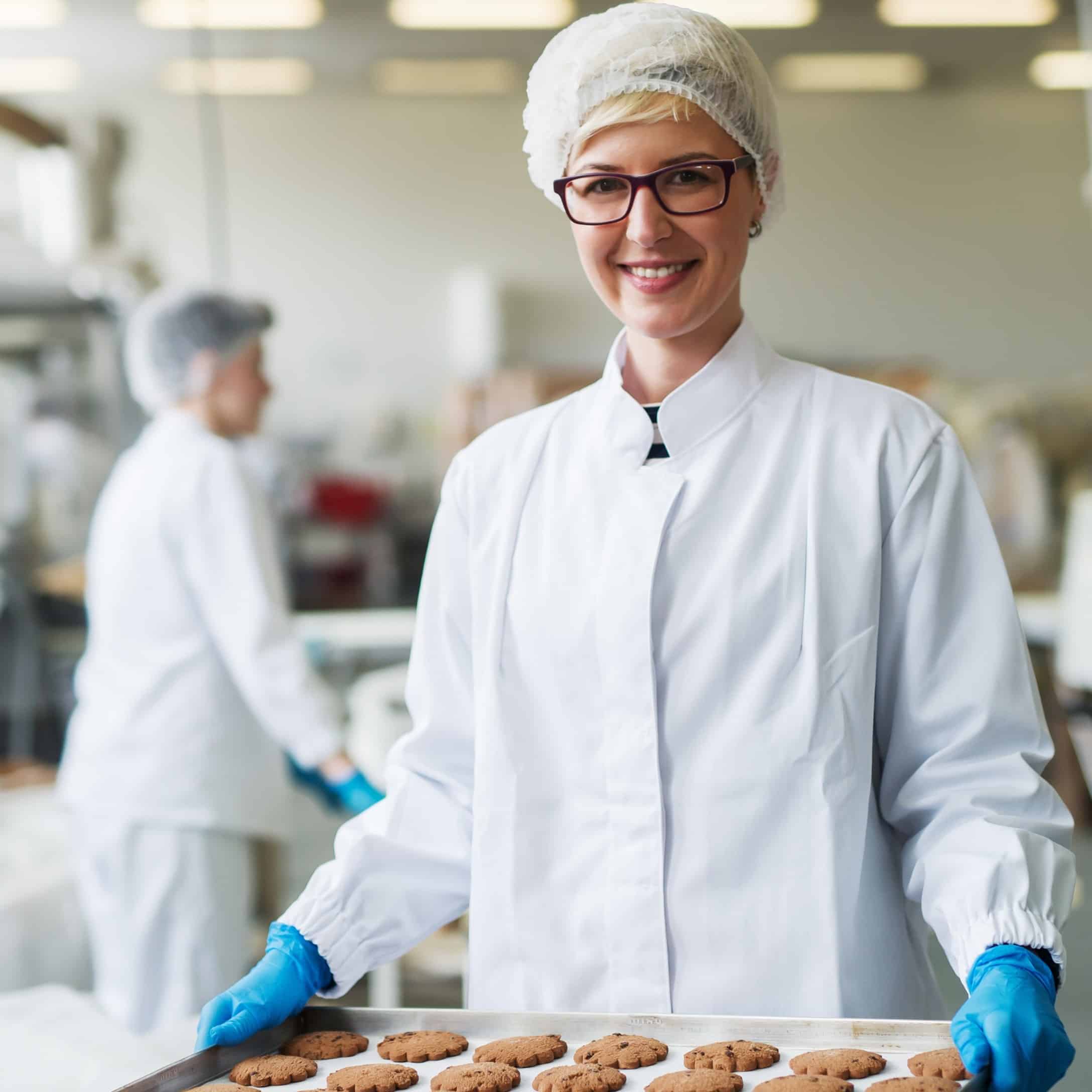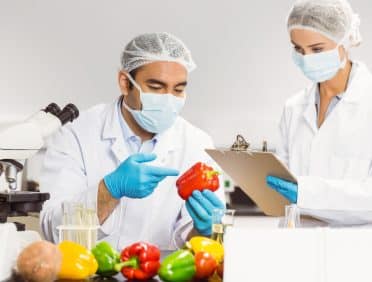Why is food safety important?
Food safety is a crucial concern for food businesses as it serves multiple purposes;
Firstly, compliance with food safety laws and regulations is mandatory, and failure to adhere to them can result in penalties, fines, and legal action.
Secondly, food businesses have a responsibility to protect their customers from harm caused by consuming contaminated or unsafe food, which can cause foodborne illnesses, allergic reactions, and other health issues. Ensuring food safety helps to build customer trust and confidence, leading to repeat business and referrals. The reputation of a food business is also at stake if there is a single incident of food poisoning or contamination.
Finally, adhering to food safety practices can lead to cost savings by avoiding recalls, legal fees, and damage to your business’s reputation. Ultimately, preventing food safety issues is more cost-effective than dealing with the consequences of a foodborne illness outbreak.
The Law: Food Safety Act 1990
The Food Safety Act 1990
is a UK law that outlines the regulatory framework for food safety. It places legal responsibilities on food businesses to ensure that the food they sell or serve is safe for human consumption. The Act applies to all stages of food production, from ‘the farm’ to the final consumer.
Under the Food Safety Act 1990, food businesses are required to ensure that the food they sell or serve is safe, fit for human consumption, and free from contaminants. They must also ensure that the food is labelled, advertised, and presented in a way that is not false or misleading.
The Act establishes the Food Standards Agency (FSA) as the UK’s central government body responsible for food safety. The FSA is responsible for developing and enforcing food safety regulations, as well as conducting research and providing information to the public on food safety.
The Food Safety Act 1990 also includes provisions for the enforcement of food safety regulations. Local authorities, such as environmental health departments, are responsible for enforcing the Act and ensuring that food businesses comply with its provisions. The Act provides for penalties and legal action against food businesses that fail to comply with food safety regulations.
Certifications and Compliance
There are several food safety certifications and compliance requirements in the UK that food businesses may need to adhere to. Some of the most common certifications and compliance requirements are:
- Hazard Analysis and Critical Control Points (HACCP) (see below)
- Food Hygiene Rating Scheme (see below)
- British Retail Consortium (BRC) Global Standard for Food Safety: The BRC Global Standard for Food Safety is a certification scheme that sets out requirements for food safety management systems. It is widely recognized by retailers and food service companies, and certification can help food businesses demonstrate their compliance with food safety standards.
- Safe and Local Supplier Approval (SALSA): SALSA is a food safety certification scheme specifically designed for small and medium-sized food businesses. It helps these businesses demonstrate their compliance with food safety regulations and can be a useful tool for accessing new markets.
- Food Standards Agency (FSA) guidance: The FSA provides guidance on food safety regulations and requirements, and food businesses are expected to follow this guidance to ensure compliance with the law.
Managing food safety procedures
Managing food safety procedures is essential for food businesses to ensure that the food they sell or serve is safe for consumption.
The most recognised food safety procedures that food businesses should follow are outlined in the Hazard Analysis and Critical Control Point (HACCP) system (see below).
Hazard Analysis and Critical Control Point (HACCP)
Hazard Analysis and Critical Control Point (HACCP) is a food safety management system designed to identify and control potential hazards in the food production process. It is a proactive approach to food safety that focuses on preventing problems before they occur, rather than reacting to them after the fact.
HACCP is based on seven principles:
- Conduct a Hazard Analysis: Identify potential biological, chemical, or physical hazards that could occur at each stage of the food production process.
- Determine Critical Control Points (CCPs): Identify points in the production process where hazards can be controlled or eliminated.
- Establish Critical Limits: Establish critical limits for each CCP, which are the maximum or minimum values for physical, chemical, or biological parameters that must be maintained to ensure food safety.
- Implement Monitoring Procedures: Establish procedures for monitoring the CCPs to ensure that critical limits are being met.
- Establish Corrective Actions: Establish procedures for taking corrective actions if critical limits are not met.
- Implement Verification Procedures: Establish procedures for verifying that the HACCP system is working effectively.
- Establish Record-Keeping and Documentation Procedures: Establish procedures for maintaining records and documentation to demonstrate that the HACCP system is working effectively.
By implementing HACCP, food businesses can identify and control potential hazards in the food production process, ensure compliance with legal requirements, and protect their customers from harm caused by consuming contaminated or unsafe food.
Food safety inspections and enforcement
Food safety inspections and enforcement are critical components of ensuring that food businesses comply with legal requirements and produce safe food. In the UK, food safety inspections and enforcement are carried out by local authorities, who are responsible for enforcing food safety regulations in their area.
Food safety inspections typically involve a local authority environmental health officer visiting a food business to assess its compliance with food safety regulations. During the inspection, the officer will check the:
- premises,
- equipment,
- and procedures.
- They may also take samples of food for testing.
- The officer will also review documentation, such as food safety management plans and training records, to ensure that the business is complying with legal requirements.
If the inspection identifies any issues or non-compliance with food safety regulations, the local authority may take enforcement action. This can include issuing improvement notices, which require the business to make specific changes to improve food safety, or issuing prohibition orders, which prohibit the business from carrying out certain activities until the issues are resolved.
In serious cases of non-compliance, the local authority may take legal action against the business. This can result in fines, closure of the business, or even imprisonment in extreme cases. The local authority may also report the business to the Food Standards Agency (FSA), which can take further enforcement action.
Food safety inspections and enforcement protect consumers from harm caused by consuming contaminated or unsafe food. They also help to ensure a level playing field for food businesses, by ensuring that all businesses comply with the same standards and regulations. The benefits to your business of complying with food safety regulations is that you can build customer trust and confidence, and protect your reputation.
Food hygiene rating
Launched in 2010, The Food Hygiene Rating Scheme is a UK-wide scheme that rates food businesses on their compliance with food hygiene and safety regulations. It is run by local authorities in England, Wales, and Northern Ireland, and by Food Standards Scotland in Scotland.
The scheme rates food businesses on a scale from 0 (urgent improvement necessary) to 5 (very good). The ratings are based on three main areas:
- Food hygiene and safety: This covers how the food is prepared, cooked, reheated, and stored, as well as the cleanliness and condition of the premises and equipment.
- Structure and cleanliness: This covers the condition of the premises, including its layout, ventilation, lighting, and cleanliness.
- Confidence in management: This covers how the business manages and records its food safety procedures, including staff training, monitoring procedures, and record-keeping.
The ratings are intended to provide consumers with an easy-to-understand indication of a food business’s hygiene standards. Food businesses are required to display their rating in a prominent place, such as the front door or window, and must also provide a certificate showing their rating.
The Food Hygiene Rating Scheme is voluntary, but many food businesses choose to participate as it can help them demonstrate their commitment to food safety and build customer confidence. In some areas, the display of the rating is mandatory, and businesses can face enforcement action if they fail to display their rating.
Food hygiene safety
Food hygiene safety is the practice of ensuring that food is safe for consumption by preventing contamination and minimising the risk of foodborne illnesses. Food hygiene safety is essential for all businesses involved in food production, preparation, and service, from farmers and producers to retailers and restaurants.
The following are some key principles of food hygiene safety:
- Personal hygiene: Ensuring that food handlers maintain high standards of personal hygiene, such as regularly washing their hands and wearing clean clothing.
- Cleaning and disinfection: Making sure that food preparation areas, utensils, and equipment are cleaned and disinfected regularly to prevent cross-contamination.
- Temperature control: Checking that food is stored and cooked at the correct temperatures to prevent the growth of harmful bacteria.
- Pest control: Putting measures in place to prevent pests such as rodents and insects from contaminating food.
- Food storage: Storing food correctly to prevent contamination, such as keeping raw meat separate from other foods.
- Allergen management: Correctly identifying and managing allergens to prevent allergic reactions in customers.
Food hygiene safety is regulated in the UK by the Food Standards Agency (FSA) and, as mentioned, failure to comply with food hygiene safety regulations can result in legal action, including fines, closure of the business, and even imprisonment in severe cases.
Food allergens
Food allergens are substances that can cause an allergic reaction in some people. Allergies occur when the body’s immune system reacts to a substance, such as a food allergen, as if it were harmful. The reaction can range from mild symptoms, such as itching and hives, to severe symptoms, such as anaphylaxis, which can be life-threatening.
In the UK, there are 14 major food allergens that are legally required to be identified on food labels. These are:
- Cereals containing gluten, such as wheat, rye, and barley
- Crustaceans, such as prawns, crabs, and lobsters
- Eggs
- Fish
- Peanuts
- Soybeans
- Milk
- Nuts, such as almonds, hazelnuts, and walnuts
- Celery
- Mustard
- Sesame seeds
- Sulphur dioxide and sulphites (at concentrations above 10mg/kg or 10mg/L)
- Lupin
- Molluscs, such as clams, mussels, and oysters
Food businesses are required by law to identify and manage allergens in their products and to provide information to customers about the presence of allergens. This includes providing information on menus, packaging, and in-store displays. In addition, food businesses are required to have procedures in place to prevent cross-contamination of allergens during food preparation.
Managing allergens is essential for food businesses to protect customers with allergies from potentially life-threatening reactions.
To help you and your team remember these 14 allergens, you can download Learn Q’s FREE food allergens poster by clicking here.
The 4Cs of food hygiene
The 4Cs of food hygiene are a set of principles that help to ensure food safety by minimising the risk of contamination. The 4Cs of food hygiene are:
- Cleaning
- Cooking
- Chilling
- Cross-contamination
Let’s look at these in more detail now:
Cleaning
Proper cleaning helps to prevent the spread of harmful bacteria and other contaminants that can cause foodborne illnesses. Cleaning should be done regularly, and all equipment and surfaces that come into contact with food should be cleaned and disinfected after each use.
Some key principles are:
- Cleaning frequency: Equipment and surfaces that come into contact with food should be cleaned and disinfected regularly. The frequency of cleaning depends on the type of equipment and its use. High-risk items such as cutting boards and food preparation surfaces should be cleaned and disinfected after each use.
- Cleaning procedures: Cleaning procedures should be clearly defined, and staff should be trained to follow them. This includes using appropriate cleaning agents and tools, such as sponges and cloths, and ensuring that they are clean and disinfected before use.
- Storage of cleaning materials: Cleaning materials should be stored in a clean and dry area, away from food preparation areas, to prevent contamination.
- Personal hygiene: Staff responsible for cleaning should maintain high standards of personal hygiene, including washing their hands before and after cleaning.
- Cleaning records: Records should be kept of cleaning schedules, including the date, time, and location of each cleaning activity.
One of your responsibilities as a business owner is cleaning the kitchen at the end of each day. You can download a FREE poster / guide by clicking here.
Cooking
Cooking things properly helps to kill harmful bacteria and other pathogens that can cause foodborne illnesses. Cooking temperatures and times vary depending on the type of food being cooked, and it is essential to ensure that food is cooked thoroughly to kill harmful bacteria.
Be aware of:
- Temperature control: Different types of food require different cooking temperatures to ensure that they are cooked thoroughly. It is important to use a food thermometer to check that food has reached the correct temperature. For example, poultry should be cooked to an internal temperature of 75°C.
- Cooking times: Cooking times vary depending on the type of food being cooked. For example, a steak may only need a few minutes to cook, while a stew may need several hours.
- Resting time: After cooking, some foods need to rest for a period to allow the temperature to even out and the juices to redistribute. For example, a roast chicken should rest for at least 15 minutes before carving.
- Reheating: When reheating food, it is important to ensure that it reaches a temperature of at least 75°C to kill any bacteria that may have grown during storage.
You can download our FREE Key Kitchen Temperatures poster by clicking here.
Chilling
Chilling helps to prevent the growth of harmful bacteria that can cause foodborne illnesses. Food that needs to be chilled should be stored at a temperature of 8°C or below to slow the growth of bacteria.
The key principles of chilling are:
- Temperature control: Refrigerators and freezers should be set to the correct temperature, and the temperature should be monitored regularly to ensure that it remains within the safe range.
- Storage: Food should be stored in covered containers to prevent cross-contamination and should be stored on shelves or racks to allow for air circulation.
- Cooling: Hot food should be cooled rapidly to prevent the growth of bacteria. One way to do this is to divide the food into smaller portions and cool it in shallow containers in the refrigerator or freezer.
- Reheating: When reheating food, it is important to ensure that it reaches a temperature of at least 75°C to kill any bacteria that may have grown during storage.
You can download our FREE Key Kitchen Temperatures poster by clicking here.
Cross-contamination
Cross-contamination occurs when harmful bacteria and other pathogens are transferred from one food or surface to another, which can cause foodborne illnesses. It is important to prevent cross-contamination by keeping raw and cooked foods separate and using separate equipment and utensils for each.
The main points are:
- Separate equipment and utensils: Use separate cutting boards, knives, and other equipment for raw and cooked foods. This will help prevent the transfer of harmful bacteria from raw foods to cooked foods.
- Personal hygiene: Staff should maintain high standards of personal hygiene, including washing their hands regularly and wearing clean clothing.
- Food storage: Raw foods should be stored separately from cooked foods to prevent cross-contamination. Use separate storage areas or containers for raw and cooked foods.
- Cleaning and disinfection: Surfaces, equipment, and utensils should be cleaned and disinfected regularly to prevent the spread of harmful bacteria.
If you want a FREE, handy, at-a-glance reference, look no further than Learn Q’s ‘5 Types of Food Contamination’ poster – available by clicking here.
Storing food safely
Correct storage of food is essential for ensuring food safety and hygiene. To store food safely you need to manage:
- Temperature control: Some foods need to be kept refrigerated or frozen to prevent the growth of harmful bacteria. The temperature of refrigerators and freezers should be monitored regularly, and food should be stored at the correct temperature to prevent spoilage.
- Storage containers: Food should be stored in covered containers to prevent cross-contamination and to keep it fresh for longer.
- Labelling: Food containers should be labelled with the date of storage and the contents to ensure that food is used within its safe storage time.
- Storage location: Food should be stored in a clean, dry, and well-ventilated area. Raw meat should be stored on the bottom shelf of the refrigerator to prevent cross-contamination, and cooked foods should be stored on the top shelf.
- Use-by and best-before dates: Food should be used by the use-by or best-before date to ensure that it is safe to eat. Foods that are past their use-by date should be discarded.
- Rotation: Foods should be rotated so that older items are used first to ensure that food is used before it spoils.
- Allergen management: Foods that contain allergens should be stored separately to prevent cross-contamination.
Transporting food safely
Transporting food safely is important to ensure that it remains safe for consumption and free from contamination.
Some key points for transporting food safely are:
- Temperature control: Hot and cold foods should be transported at the correct temperature to prevent the growth of harmful bacteria. Use insulated containers or food transportation vehicles to maintain the correct temperature.
- Packaging: Food should be packaged securely to prevent contamination during transportation. Use food-grade packaging that is suitable for the type of food being transported.
- Separation: Raw and cooked foods should be separated during transportation to prevent cross-contamination. Use separate containers or compartments for raw and cooked foods.
- Labelling: Food containers should be labelled with the date of transportation and the contents to ensure that food is used within its safe storage time.
- Allergen management: Foods that contain allergens should be stored separately to prevent cross-contamination during transportation.
- Hygiene: All food containers, equipment, and vehicles used for transportation should be clean and disinfected before and after use. Hands should be washed before handling food.
- Delivery time: Food should be delivered within the time frame specified by the customer or within the safe storage time of the food.
Personal hygiene
Personal hygiene is an important part of food safety and hygiene. Food handlers, including cooks, servers, and other staff, must maintain high standards of personal hygiene to ensure that the food they handle is safe for consumption.
Personal hygiene includes:
- Hand washing: Hands should be washed regularly and thoroughly with warm water and soap for at least 20 seconds before handling food, after handling raw meat, after using the toilet, and after handling garbage.
Download our FREE Handwashing guide by clicking here
- Clothing: Staff should wear clean clothing and aprons that cover their street clothes to prevent contamination of food.
- Hair and jewellery: Long hair should be tied back, and jewellery should be removed to prevent it from falling into food.
- Illness: Food handlers who are ill should not handle food until they have fully recovered to prevent the spread of illnesses.
- Cuts and wounds: Cuts and wounds should be covered with a waterproof bandage to prevent the spread of bacteria.
- Smoking and eating: Food handlers should not smoke or eat in food preparation or service areas to prevent contamination.
And download our FREE Personal Hygiene poster by clicking here.
Quality control management
Food quality control management involves the processes and systems used to ensure that food products meet specified quality and safety standards. It can include the following steps:
- Quality assurance: Quality assurance involves monitoring and controlling the production process to ensure that the final product meets the desired quality standards. This includes monitoring the raw materials, production processes, and finished products to ensure that they meet quality specifications.
- Quality control: Quality control involves testing the final product to ensure that it meets the specified quality standards. This includes testing for factors such as appearance, taste, texture, and nutritional content.
- Hazard analysis and critical control points (HACCP): HACCP is a systematic approach to identifying and controlling hazards that can affect the safety and quality of food products. HACCP involves identifying potential hazards, implementing controls to prevent them, and monitoring the process to ensure that the controls are effective.
- Traceability: Traceability involves tracking the movement of food products from the source to the final destination. This enables the identification of the source of any issues that may arise and allows for prompt action to be taken to resolve them.
- Documentation: Proper documentation is essential for ensuring that quality control processes are followed correctly. This includes maintaining records of testing, inspections, and audits.
By following these steps, food businesses can ensure that their products meet the desired quality and safety standards, which also helps to ensure customer satisfaction and prevent the spread of foodborne illnesses.
Packaging and labelling
Food packaging and labelling are crucial components of food safety and quality control, ensuring that the food product is safe for consumption and that the consumer is fully informed.
The following are some key principles of food packaging and labelling:
- Packaging: Food packaging should be designed to protect the product from damage, contamination, and deterioration during transportation, storage, and display.
- Labelling: Food labelling should include essential information such as the name of the product, ingredients, allergens, nutritional information, and storage instructions.
- Allergen management: Food products that contain allergens should be clearly labelled to ensure that consumers are aware of the allergens present in the product.
- Date marking: Food products should be date marked to indicate the shelf-life of the product and to ensure that it is consumed before it spoils.
- Country of origin: The country of origin of the product should be clearly labelled to inform consumers about the source of the product.
- Branding: The branding of the product should be clear and accurate to ensure that consumers can easily identify the product.
- Packaging materials: The materials used for packaging should be safe for use with food and should not contaminate the product.
Food additives
Food additives are substances added to food to improve its flavour, appearance, texture, or shelf-life. Some food additives are essential for maintaining food safety, but others can be harmful if consumed in large amounts or if they interact with other substances in the food, so a safe food business needs to know about them.
The following are some examples of food additives:
- Preservatives: Preservatives are added to food to prevent spoilage and to extend the shelf-life of the product. Examples of preservatives include sulphur dioxide, sodium nitrite, and sorbic acid.
- Antioxidants: Antioxidants are added to food to prevent the oxidation of fats and oils, which can cause rancidity and spoilage. Examples of antioxidants include tocopherols, ascorbic acid, and butylated hydroxyanisole (BHA).
- Emulsifiers: Emulsifiers are added to food to help mix ingredients that do not naturally mix, such as oil and water. Examples of emulsifiers include lecithin, monoglycerides, and diglycerides.
- Thickeners: Thickeners are added to food to improve its texture and to prevent the separation of ingredients. Examples of thickeners include xanthan gum, carrageenan, and guar gum.
- Colourants: Colourants are added to food to improve its appearance and to make it more visually appealing. Examples of colourants include caramel, annatto, and titanium dioxide.
Food businesses must follow regulations and guidelines to ensure that food additives are used safely and are within acceptable limits, so that they can be confident that the food they prepare, sell or serve is safe for consumption.
Food suppliers
Food businesses rely on their suppliers to provide them with safe and high-quality ingredients and products that meet the required standards but they can also be a point of failure so it is important to have confidence in your suppliers. Some key factors that food businesses should consider when selecting and working with food suppliers include:
- Quality assurance: Food suppliers should have effective quality assurance systems in place to ensure that the products they supply are safe and meet the required quality standards. This includes monitoring the raw materials, production processes, and finished products to ensure that they meet quality specifications.
- Hazard analysis and critical control points (HACCP): Food suppliers should have their own HACCP systems in place to identify and control hazards that can affect the safety and quality of their products.
- Traceability: Food suppliers should be able to trace the movement of their products from the source to the final destination. This enables the identification of the source of any issues that may arise and allows for prompt action to be taken to resolve them.
- Allergen management: Food suppliers should have effective systems in place to manage allergens, including the labelling of allergens on products and ensuring that they are stored and transported separately to prevent cross-contamination.
- Regulatory compliance: Food suppliers should comply with all relevant regulations and standards related to food safety.
By selecting and working with food suppliers who prioritise food safety and quality, food businesses can ensure that the ingredients and products they use are safe for consumption and meet the required quality standards.
Food Traceability
Food traceability is the ability to track the movement of food products from the source to the final destination. Traceability plays an important role in ensuring food safety, as it enables the identification of the source of any issues that may arise and allows for prompt action to be taken to resolve them.
Food traceability involves:
- Identification: Each food product should be uniquely identified to enable its traceability. This may include information such as the name of the product, the date of production, and the batch or lot number.
- Records: Food businesses should maintain detailed records of the movement of their products, including the source of the product, the location of the product, and the destination of the product.
- Technology: Technology can be used to improve the accuracy and speed of food traceability. For example, barcodes, QR codes, and radio-frequency identification (RFID) can be used to track the movement of food products.
- Regulatory compliance: Food businesses should comply with all relevant regulations and standards related to food traceability, including those related to labelling and record-keeping.
Product withdrawal and recall
You would hope that product recalls were unnecessary in a food business, but unfortunately accidents do happen so it is important to know what to do in the worst case scenarios. In the event of a food safety issue, product withdrawal and recall are necessary to prevent the spread of illnesses and/or to protect public health.
In the event of a product withdrawal and/or recall you need to cover the following:
- Identification of affected products: In the event of a food safety issue, the affected products must be identified, and their distribution and sale must be stopped immediately.
- Communication: Food businesses must communicate the product withdrawal or recall to their customers, suppliers, and other relevant parties as soon as possible. This includes providing information on the reason for the withdrawal or recall and any actions that customers should take.
- Record-keeping: Food businesses must maintain detailed records of the product withdrawal or recall, including the date, the affected products, and the actions taken.
- Collaboration: Food businesses should collaborate with the relevant authorities, such as the Food Standards Agency (FSA) in the UK, to manage the product withdrawal or recall effectively.
- Investigation: Food businesses should investigate the cause of the food safety issue to prevent similar incidents from occurring in the future.
By implementing effective product withdrawal and recall systems, food businesses can quickly and effectively respond to food safety issues and keep themselves and their business as safe as possible..
Report a food safety incident
Reporting a food safety incident within a food business is important to ensure that appropriate actions are taken as soon as possible.
The following steps can be taken to report a food safety incident within a food business:
- Have a clear internal process: and make sure that all colleagues are aware of what to do and are reminded regularly.
- Notify your supervisor or manager: immediately of the incident, including any relevant details such as the type of food involved, the symptoms experienced, and any relevant dates and times.
- Keep evidence: If possible, keep the food product and any packaging or labelling that may be relevant to the incident. This can help with the investigation.
- Follow the internal reporting process: Follow the process and provide all relevant details.
- Take corrective actions: Your food business should take appropriate corrective actions to address the incident and prevent it from happening again.
- Keep records: Your food business should maintain detailed records of the incident, including the actions taken and any communications with customers, suppliers, or authorities.
It is important to act quickly and to provide as much detail as possible to ensure that appropriate actions are taken to investigate and address the incident.
In addition to reporting a food safety incident to the relevant authority or the food business, there are other parties that may need to be notified depending on the circumstances. These include:
- Customers: If the food safety incident involves a product that has already been sold or served to customers, they may need to be notified of the incident and advised on any actions they should take.
- Suppliers: If the food safety incident involves a raw material or ingredient supplied by a third-party supplier, they should be notified of the incident and asked to investigate the cause.
- Healthcare providers: If the food safety incident has resulted in illness or injury, healthcare providers may need to be notified and provided with relevant information to assist with diagnosis and treatment.
- Regulators: Depending on the nature and severity of the incident, regulators such as the Food Standards Agency (FSA) in the UK may need to be notified.
Staff training
Proper training is crucial for ensuring compliance with food legislation in your business. With adequate training on food safety matters, you and your colleagues can significantly decrease the probability of non-compliance with food regulations. This ensures that the food you produce and/or serve is safe and of high quality, safeguarding public health, and preserving the reputation and profitability of your food business.
HACCP training is recommended in line with the above article. Although not everyone needs to go through HACCP training, you should ensure at least some senior members of staff are aware so that they can set systems up and cascade to their colleagues.
Risk Assessment Awareness is training that senior members of the team should complete, and you may want to consider Risk Assessment Awareness for other colleagues.
All of our courses have with discounts available for 10+ orders
Or SAVE OVER 50% (Buy One Get One Free) and ensure your business is even safer by choosing one of our bundles:
If you would like to download all of our FREE food safety posters in one pack, click here.
o download a .pdf of this blog, please click here













